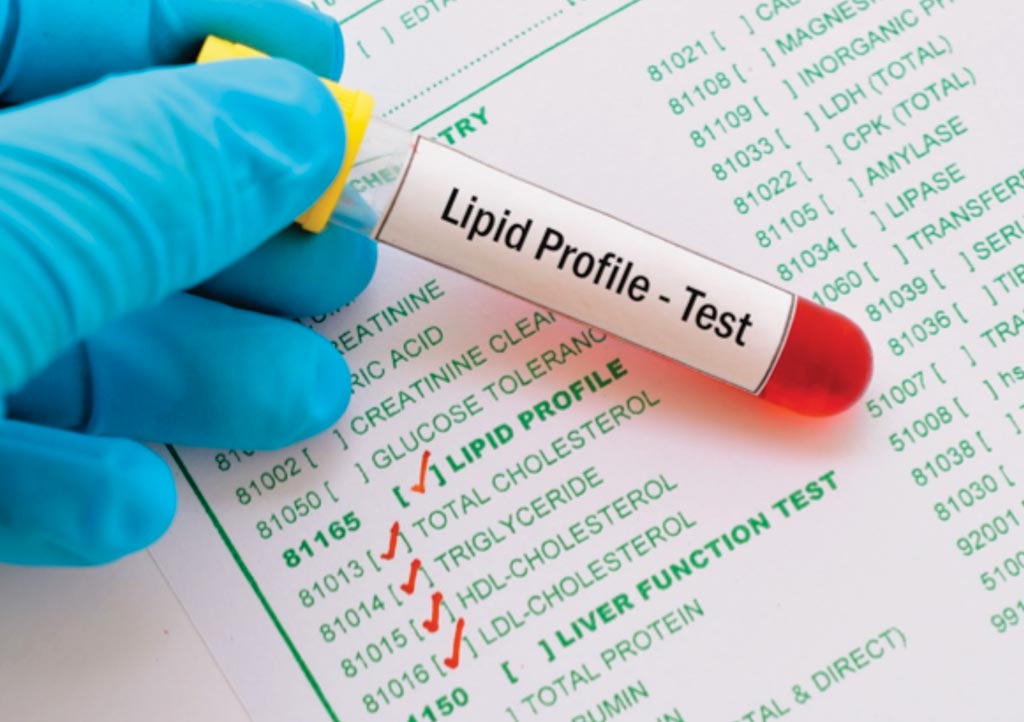High Remnant Particle Cholesterol Levels Profiled in Blood
By LabMedica International staff writers
Posted on 14 Aug 2019
Three quarters of the Danish population have moderately elevated levels of cholesterol. If cholesterol levels are too high, risk of cardiovascular disease is increased. Often, low-density lipoprotein (LDL) cholesterol, the so-called bad cholesterol, is considered the culprit.Posted on 14 Aug 2019
Increased concentrations of calculated remnant cholesterol in triglyceride-rich lipoproteins are observationally and genetically, causally associated with increased risk of ischemic heart disease; however, when measured directly, the fraction of plasma cholesterol present in remnant particles is unclear.

Image: Scientists determined that one-third of total cholesterol in plasma was present in remnant lipoproteins, which is in the triglyceride-rich lipoproteins intermediate-density lipoprotein (IDL) and very low-density lipoprotein (VLDL) (Photo courtesy of Harvard Medical School).
Medical Biochemists associated with the Herlev and Gentofte Hospital (Herlev, Denmark) examined 9,293 individuals from the Copenhagen General Population Study using nuclear magnetic resonance spectroscopy measurements of total cholesterol, free- and esterified cholesterol, triglycerides, phospholipids, and particle concentration. Fourteen subclasses of decreasing size and their lipid constituents were analyzed: six subclasses were very low-density lipoprotein (VLDL), one intermediate-density lipoprotein (IDL), three low-density lipoproteins (LDL), and four subclasses were high-density lipoprotein (HDL). Remnant lipoproteins were VLDL and IDL combined.
The scientists reported that the mean non-fasting cholesterol concentration was 1.84 mmol/L (72 mg/dL) for remnants, 2.01 mmol/L (78 mg/dL) for LDL, and 1.83 mmol/L (71 mg/dL) for HDL, equivalent to remnants containing 32% of plasma total cholesterol. Of 14 lipoprotein subclasses, large LDL and IDL were the ones containing most of plasma cholesterol. The plasma concentration of remnant cholesterol was from ∼1.4 mmol/L (54 mg/dL) at age 20 to ∼1.9 mmol/L (74 mg/dL) at age 60. Corresponding values for LDL cholesterol were from ∼1.5 mmol/L (58 mg/dL) to ∼2.1 mmol/L (81 mg/dL).
Børge G. Nordestgaard, MD, DMSc, Chief Physician in Clinical Biochemistry and senior author of the study said, “'Our findings point to the fact that prevention of myocardial infarction and stroke should not just focus on reducing the bad LDL cholesterol, but also on reducing remnant cholesterol and triglycerides. So far, both cardiologists and GPs have focused mostly on reducing LDL cholesterol, but in the future, the focus will also be on reducing triglycerides and remnant cholesterol.” The authors concluded that using direct measurements, one third of total cholesterol in plasma was present in remnant lipoproteins, that is, in the triglyceride-rich lipoproteins IDL and VLDL. The study was published in the July 2019 issue of the journal Atherosclerosis.
Related Links:
Herlev and Gentofte Hospital













